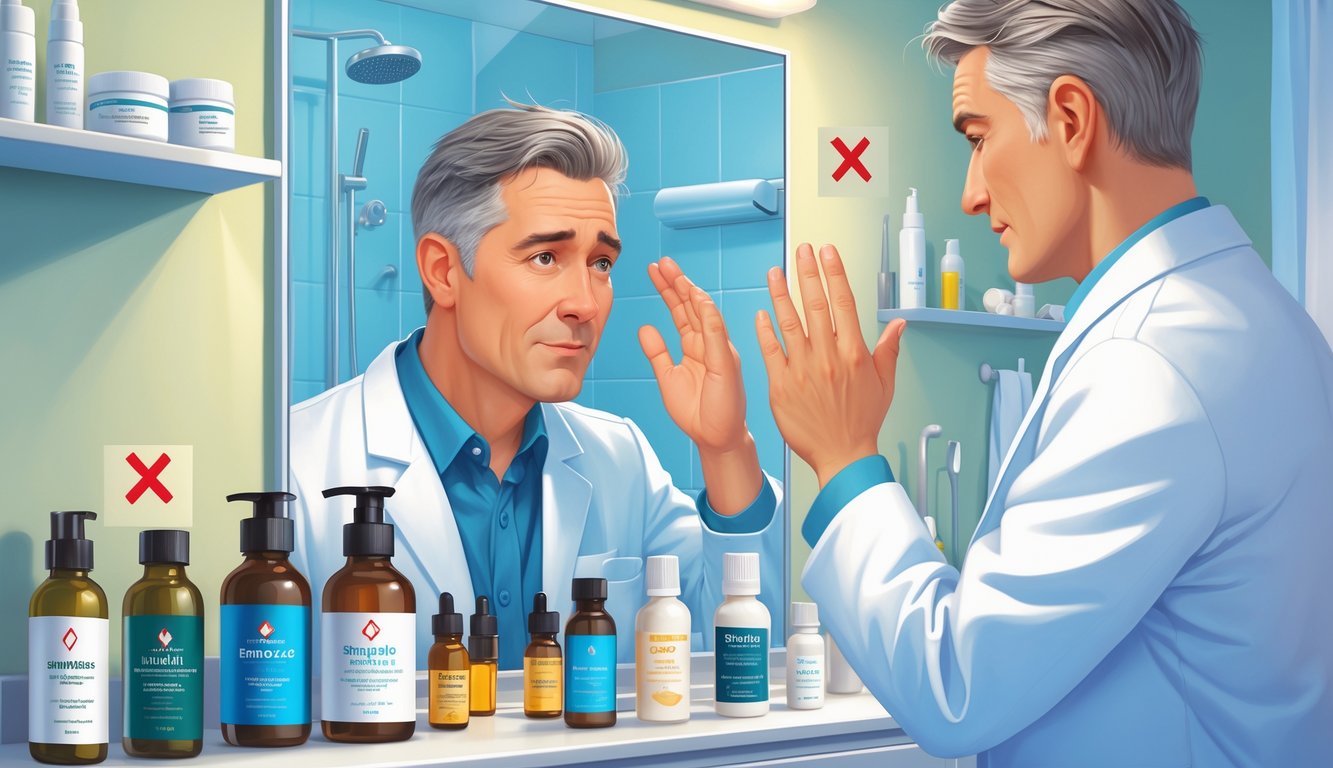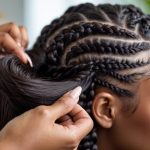
When to See a Dermatologist for Hair Loss

Clumps in the drain, temples creeping back—what’s normal, what’s not? Not all hair loss is “just aging.” I’ve seen too many people waste months on vitamins when they should’ve seen a doctor.
Signs Your Hair Loss Needs Professional Attention
Handfuls of hair every shower? Not normal. But then my cousin panicked over a slightly wider part, so who even knows. Dermatologists at every conference love to mention this: sudden shedding, fast-widening parts, or obvious scalp patches are serious. The American Academy of Dermatology says if you see steady thinning for a few weeks, go see a pro.
Eyebrows or eyelashes thinning? That’s not a TikTok trend—get checked. Telogen effluvium is another phrase you’ll hear; it often follows stress, illness, or surgery, but sometimes it just hangs on. When over-the-counter stuff does nothing, stop Googling vitamins and get evaluated—sometimes you need a scalp biopsy. It’s wild how many people just wait, hoping things “self-correct.” Denial isn’t a treatment.
Alopecia Areata and Other Medical Conditions
Let me just say it: alopecia areata is maddening. It’s not about your shampoo, and it’s not because you’re stressed about your boss’s emails. Nope, it’s your immune system straight-up going rogue. I watched a friend slather on castor oil every night, totally ignoring the actual autoimmune problem—spoiler, didn’t work. Dermatologists? They’ll clock that round patch in seconds. Google? Good luck.
And then there’s all the other stuff—lupus, thyroid issues, whatever—those come with oddball symptoms: nails splitting, fatigue that makes coffee useless, rashes that show up just to annoy you. If your hair’s falling out and you’re also aching, breaking out, or your weight’s bouncing around, that’s not just “bad luck.” Minoxidil? “Thickening” shampoos? Might as well pour them on a cactus. They don’t solve the root problem.
One time, a dermatologist told me—way too bluntly for my ego—that you have to treat alopecia areata early. Steroid injections, sometimes. Not “miracle” pills from late-night ads, not hiding under a hat for half a year hoping it’ll stop. If you want the full, slightly terrifying rundown, City Dermatology Clinic has a monster deep-dive: citydermatologyclinic.com/dermatology/seeing-a-dermatologist-for-hair-loss-what-to-expect-and-best-solutions.
The Role of Hormones in Male Pattern Baldness
Honestly, who hasn’t wondered if those fancy serums or scalp massagers do anything? I’ve sat in waiting rooms listening to dudes moan about DHT, like it’s some cartoon villain. Most just want their hair back, not a science lesson. It’s weird—hormones, follicles, your dad’s hairline—it’s technical but also weirdly personal. I overheard a guy with movie-star hair asking if he’d go bald like his dad. I mean, why do we all care so much?
DHT and Hair Follicle Sensitivity
Here’s what I still don’t get: why is it always DHT? Not just testosterone—no, it’s got to be the sneaky, mutated version. Dermatologists I’ve bugged about this say DHT shrinks hair follicles in guys with the wrong genetics. Read a Cleveland Clinic article—half of men lose hair by age fifty, mostly the classic thinning crown or receding hairline.
My own doc put it like this: DHT isn’t evil, but if your follicles are sensitive (thanks, ancestors), it’s game over. I know two brothers—one bald at thirty, one with a mane at fifty—same hormones, apparently. DHT-blocking shampoos? Nobody at the pharmacy ever looks impressed. If they worked, we’d all be set, right?
Androgenetic alopecia (fancy way of saying “you’re balding”) is just DHT sensitivity, over and over, in every specialist article and dermatology Q&A. If someone tells me “it’s just aging” again, I’m printing out the Hamilton-Norwood scale and handing it out at Thanksgiving.
Alternative and Emerging Hair Loss Solutions
No one warns you that your phone’s camera will start highlighting your bald spot, or that every “miracle” for hair loss will start showing up in your feed right before payday. Dermatologists? They just sigh at the latest gadgets. Let’s figure out what’s actually worth trying and what belongs in the trash.
Laser Treatments and Devices
Bought a laser comb on sale? Yeah, me too. Regretted it. These gadgets—LLLT helmets, caps, whatever—promise to “stimulate” follicles, but honestly, most of it is marketing. FDA says they’re safe, but that’s not the same as saying they work. Those ads blur that line on purpose.
Here’s what actually surprised me: a 2023 Journal of Dermatology meta-analysis said LLLT devices might help less than 20% of users, and only if you’re religious about using them for months. But there’s no standard—wavelength, session time, device shape—all over the place. Dr. Lindsey Bordone (Columbia) told me, “Almost none of my patients saw results better than minoxidil.” Not exactly thrilling. Feels like a slow, expensive gamble. Not worth the scalp acne, either.
Future Research in Hair Restoration
Now everyone’s whispering about PP405, supposed to be a 2025 “breakthrough” for androgenetic alopecia. Dermatologists keep warning: don’t buy the hype. It’s a topical drug that targets DHT differently, but all the real data is buried in clinical trial limbo. I asked a pharmacist friend—she thought I was talking about salad dressing.
Stem cell therapy? Absurdly expensive, not really approved, mostly experimental. Some clinics push PRP and Z-Factors, but every before-and-after photo is suspiciously different lighting or, like, a new haircut. If I believed every influencer, I’d be microwaving onions. My dermatologist said, “PRP might help a little—10-15% density in the best cases.” Not exactly a full mane. So I keep refreshing clinicaltrials.gov, but it’s mostly a graveyard of maybe-next-years and science projects.



